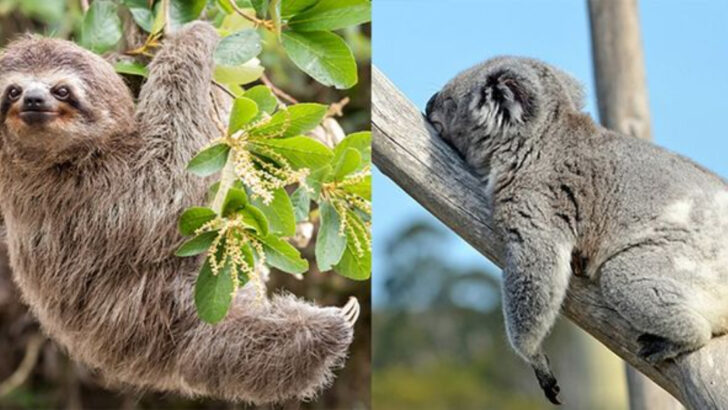Some creatures are just too good to evolve only once. Across the globe, nature has pulled the same trick multiple times—shaping nearly identical animals in places thousands of miles apart. Think of it as evolution’s version of déjà vu, where completely unrelated species end up with the same body, the same tools, and the same survival style. Why do so many marsupials look like their placental cousins? How did two totally different animals invent the same kind of “snorkel” or digging claw? It all comes down to one simple truth: when an idea works, nature runs with it—again and again. These 16 creatures are proof that evolution doesn’t always need new ideas. Sometimes, it just perfects the old ones in brand-new places.
The Tasmanian Tiger and the Wolf
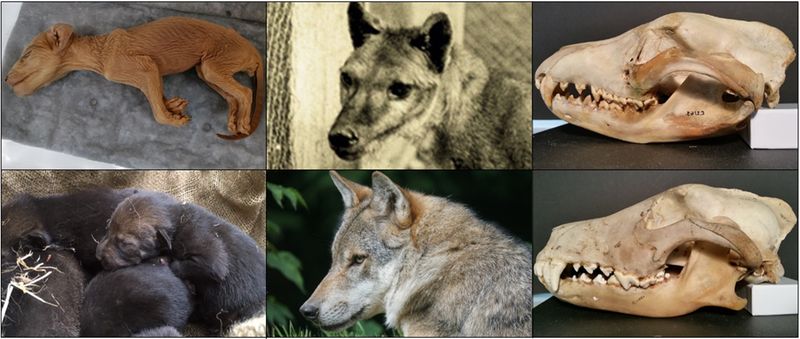
The enigmatic Tasmanian tiger, or thylacine, roamed the wilds of Tasmania with its distinct stripes and dog-like features. Across the oceans, the wolf prowled North America with a similar silhouette. Despite their uncanny resemblance, these two predators were miles apart in ancestry.
While the thylacine was a marsupial, the wolf is a placental mammal. Their similar appearance is a prime example of convergent evolution. Both evolved to become apex predators in their respective ecosystems.
Tragically, the thylacine is now extinct, but conservation efforts strive to protect the remaining wolves.
Dolphins and Ichthyosaurs
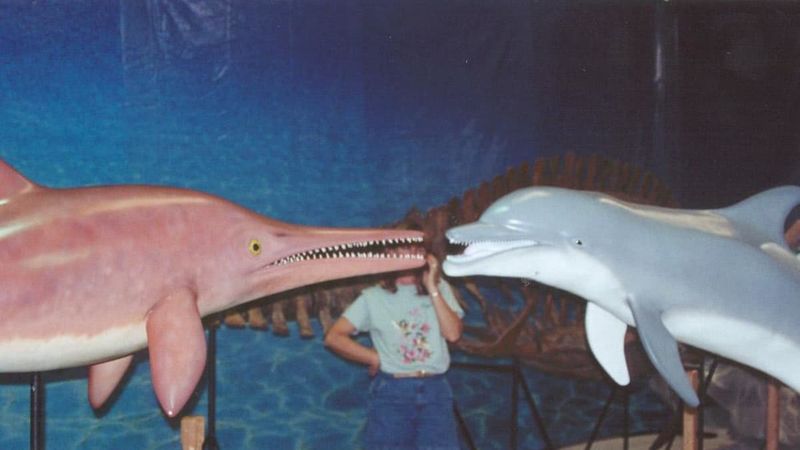
In the vastness of the oceans, dolphins enchant with their intelligence and agility. Millions of years ago, ichthyosaurs, marine reptiles, swam with similar grace. These two creatures, separated by time, showcase nature’s penchant for functional design.
Dolphins, mammals with sonar capabilities, and ichthyosaurs, reptiles with streamlined bodies, evolved to thrive in aquatic environments. Their similar streamlined shapes were perfect for swift swimming.
The fossil records reveal ichthyosaurs’ dominance during the Mesozoic era, while dolphins continue to charm us today. Both highlight the wonders of oceanic adaptation.
Anteaters and Aardvarks
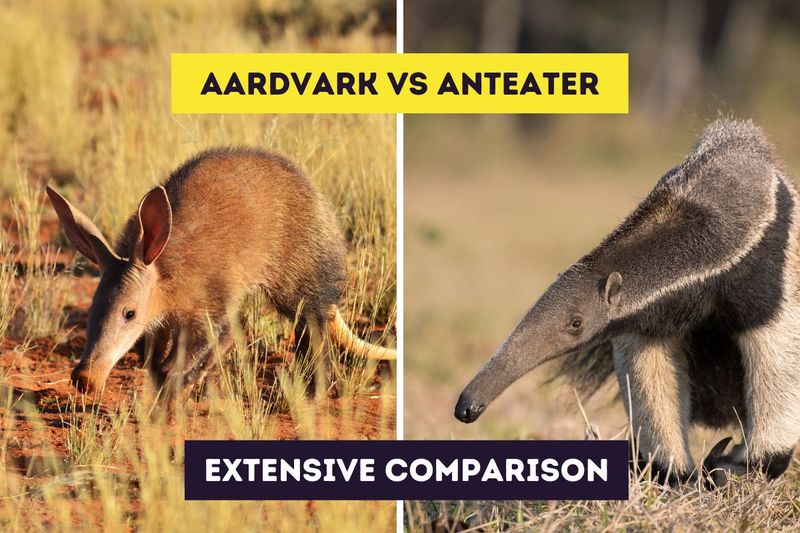
With snouts perfectly crafted for snuffling through termite mounds, both the anteater and the aardvark have become masters of their meals. Residing in different continents, these creatures evolved similar traits to satisfy their insectivorous diets.
Anteaters, found in Central and South America, and aardvarks, native to Africa, both developed elongated snouts and sticky tongues for efficient ant hunting. Their clawed forelimbs further aid in breaking into nests.
These adaptations, although parallel, were shaped by the distinct environments they inhabit. Their evolutionary stories underscore nature’s adaptability and resourcefulness.
Sugar Gliders and Flying Squirrels
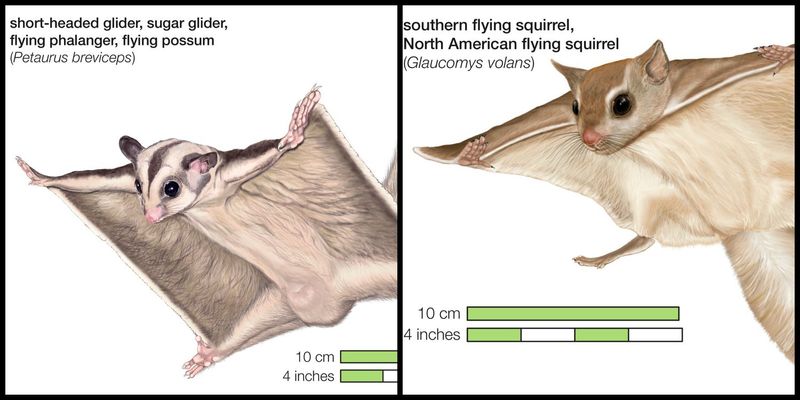
In the moonlit forests of Australia, sugar gliders leap gracefully, while across the globe, flying squirrels glide silently. These aerial acrobats share more than their love for the night skies.
Both evolved flaps of skin, known as patagia, that extend from their wrists to their ankles, allowing them to glide between trees. However, sugar gliders are marsupials, while flying squirrels are placental mammals.
Their evolution is testament to the effectiveness of gliding as a mode of travel and foraging. Each species adapted this trait independently, showcasing convergent evolution’s creative ingenuity.
Elephants and Mammoths
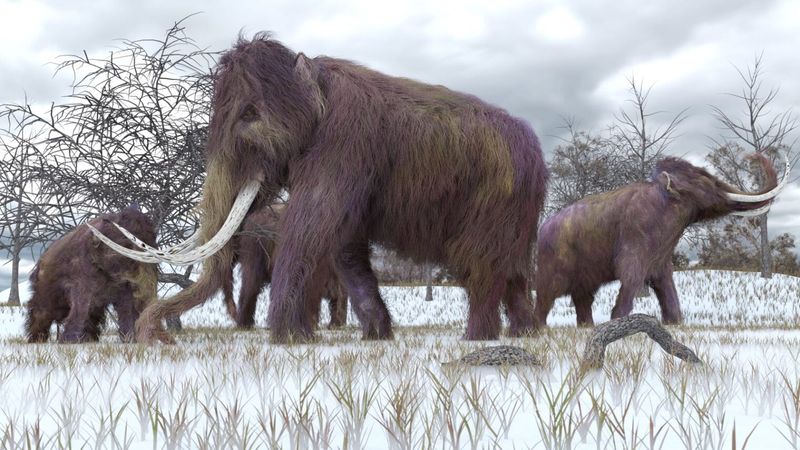
Standing tall and grand, elephants today are the largest land animals, reminiscent of their ancient relatives, the mammoths. Both share a lumbering grace and impressive tusks.
Elephants, native to the warm climates of Africa and Asia, and mammoths, adapted to icy environments, exhibit convergent evolution in their size and features. Mammoths had thicker fur and longer tusks, suited for the cold.
The similarities in their anatomy suggest a shared lineage, yet each adapted uniquely to their habitats. Mammoths are now extinct, but their legacy continues through elephants.
Armadillos and Pangolins
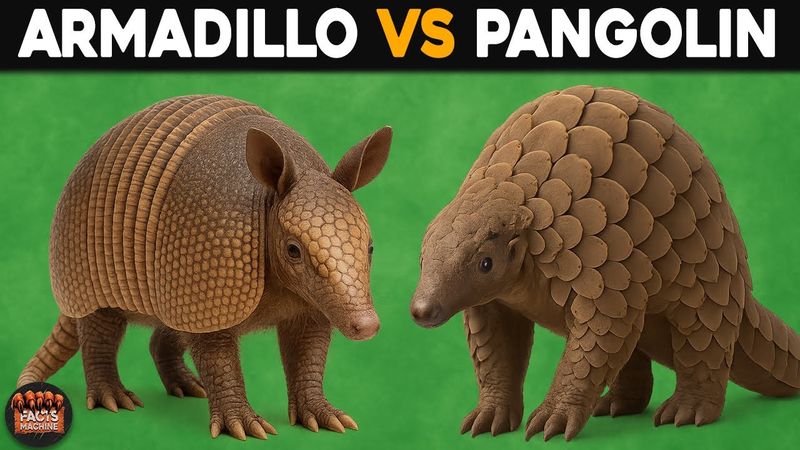
Encased in armor-like scales, armadillos and pangolins are nature’s armored knights. These creatures, hailing from separate continents, showcase evolution’s penchant for protection.
Armadillos, found in the Americas, and pangolins, native to Africa and Asia, evolved tough scales as a defense against predators. They both curl into tight balls when threatened, a behavior that enhances their defense mechanism.
Despite their similarities, these creatures share no direct lineage, a testament to convergent evolution’s ability to craft similar adaptations in disparate environments. Each continues to intrigue scientists and conservationists alike.
Marsupial Lions and African Lions
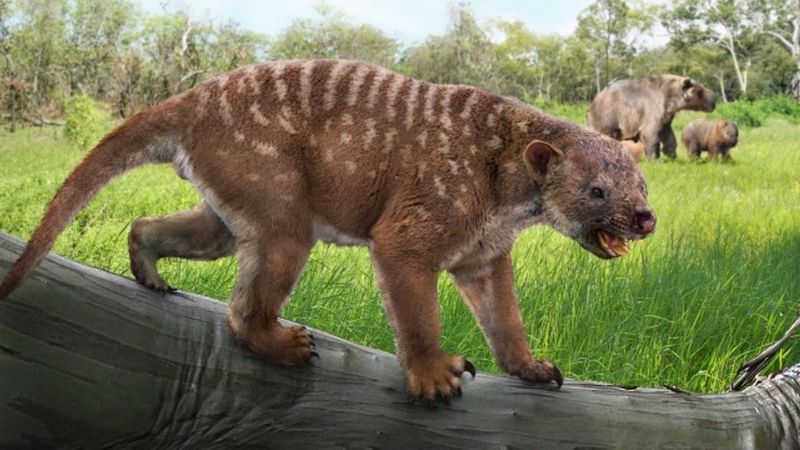
In prehistoric Australia, marsupial lions prowled, their fierce reputation echoing across the ages. Meanwhile, African lions, the kings of the savanna, continue their reign.
Both predators developed powerful jaws and muscular builds, traits ideal for hunting. Yet, the marsupial lion was a marsupial, unlike its placental counterpart.
Their evolution into apex predators in their respective territories underscores convergent evolution. Despite their geographical and genetic divides, both adapted to become formidable hunters, illustrating the diverse paths evolution takes to forge similar outcomes.
North American Cactus Wrens and African Weavers
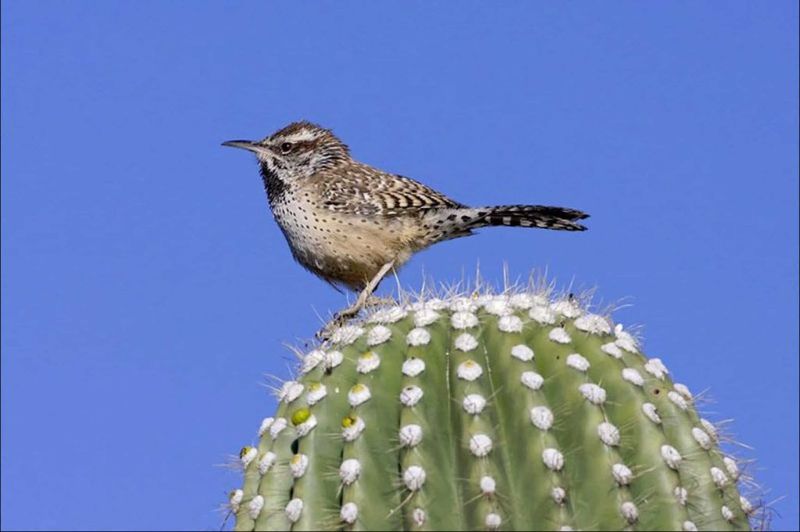
Nestled among the spines, the cactus wren weaves its home in the American deserts. Across continents, African weaver birds exhibit similar craftsmanship, constructing intricate nests.
Though unrelated, both species evolved skills for building durable nests in challenging environments. The wren’s adaptation to the harsh desert mirrors the weaver’s mastery in the savanna.
Their parallel evolution highlights inventive strategies for survival, showcasing the marvels of avian ingenuity. These birds’ architectural prowess underscores convergent evolution’s role in shaping behaviors as well as physical traits.
Giant Anteaters and Spiny Anteaters (Echidnas)
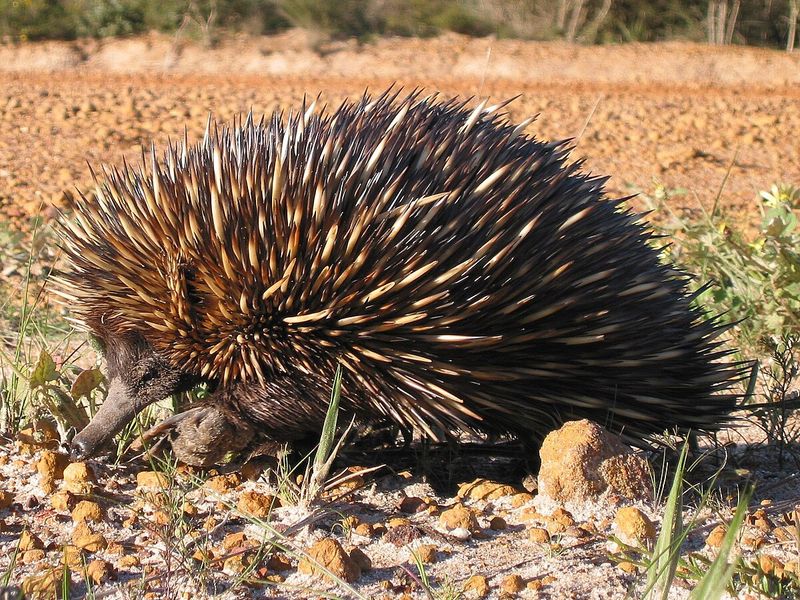
In the lush South American forests, giant anteaters forage for ants with their elongated snouts. Meanwhile, in the Australian outback, spiny anteaters, or echidnas, pursue the same prey.
These creatures developed long tongues and specialized snouts independently, enabling efficient ant consumption. The giant anteater is a placental mammal, whereas the echidna is a monotreme, a unique egg-laying mammal.
Their similar adaptations arose from identical dietary needs, illustrating convergent evolution’s influence on diverse lineages. Both remain essential to their ecosystems, highlighting nature’s diverse strategies for ecological roles.
Emperor Penguins and Great Auks

On Antarctica’s icy expanses, emperor penguins march with their young nestled close. Meanwhile, the great auk, now extinct, thrived on the North Atlantic shores.
Both birds adapted to cold climates, developing dense feathers and fat layers for insulation. The emperor penguin is a master of ice, while the great auk was equally adept at surviving harsh climes.
Despite their similarities, these birds were not closely related. Their parallel evolution underscores nature’s ability to devise similar solutions to environmental challenges, even on opposite sides of the globe.
Sharks and Dolphins
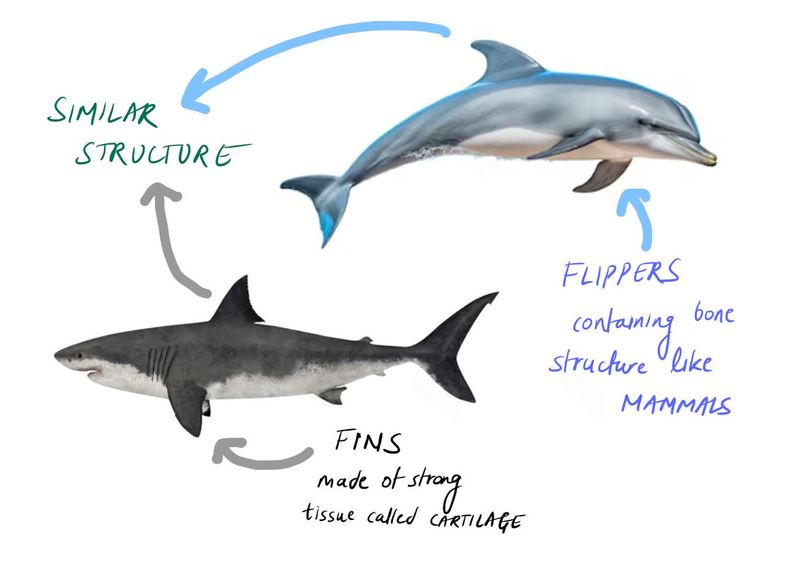
Cutting through the water with sleek precision, sharks and dolphins share striking similarities. Both possess streamlined bodies ideal for ocean life.
Despite being fish, sharks exhibit behaviors and physical traits akin to dolphins, which are mammals. Their dorsal fins, torpedo-shaped bodies, and agility highlight convergent evolution.
These adaptations, though arising from different lineages, illustrate evolution’s role in optimizing creatures for specific environments. Sharks and dolphins continue to fascinate as emblematic ocean dwellers, each with unique evolutionary tales to tell.
Hummingbirds and Sunbirds
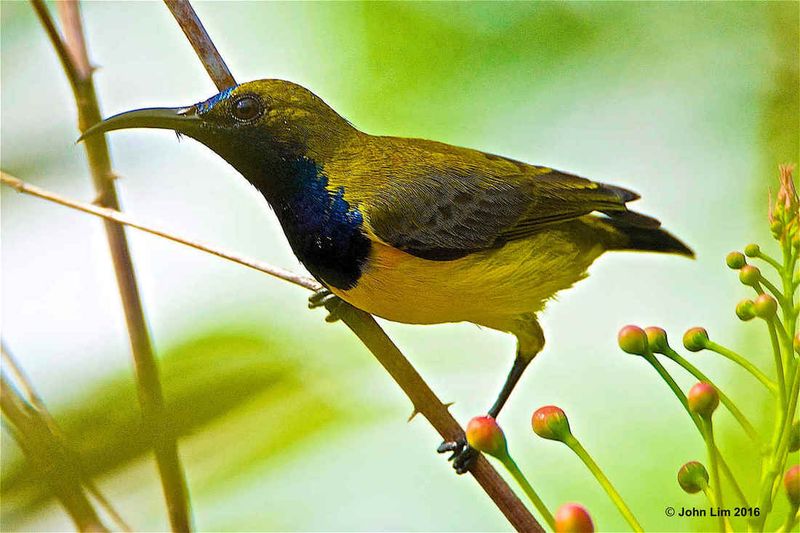
Hovering by vibrant blooms, hummingbirds and sunbirds share a nectar-filled passion. Their rapid wing beats and iridescent feathers make them jewels of their respective regions.
Hummingbirds, native to the Americas, and sunbirds, found in Africa and Asia, evolved long, slender bills and hovering abilities independently. These traits allow efficient nectar feeding.
Both birds’ evolution underscores convergent adaptation to similar ecological niches, despite geographical separations. Their beauty and agility continue to captivate birdwatchers worldwide, highlighting nature’s penchant for repeating successful designs across distant lands.
Mangabey Monkeys and Baboons
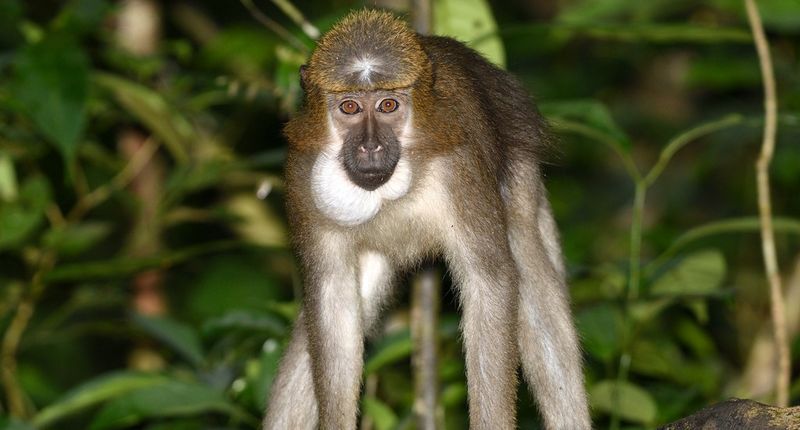
In the bustling treetops of West African forests, mangabey monkeys swing with agility. Meanwhile, baboons dominate the open savannas, showcasing astonishing similarities despite their habitat differences.
Both primates evolved strong limbs and social structures, aiding in survival in their respective environments. Mangabeys and baboons, while not direct relatives, exhibit convergent traits that suit their lifestyles.
Their evolution underscores the adaptive nature of primates, demonstrating convergent evolution’s role in shaping similar solutions for survival across varied landscapes. Their presence enriches the biodiversity of their ecosystems.
Koalas and Sloths
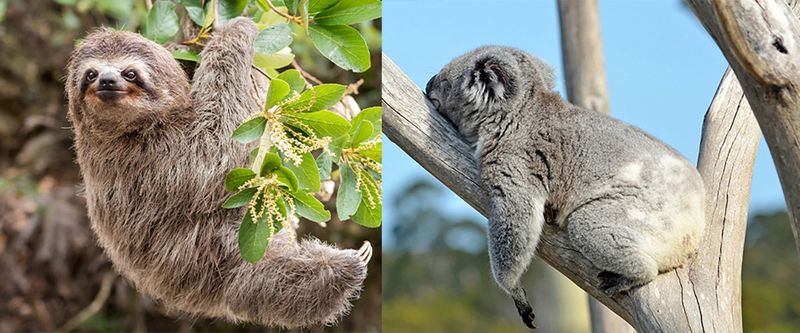
With an unhurried lifestyle, koalas munch on eucalyptus leaves under Australia’s sun. In contrast, sloths, draped in South American rainforests, embody laid-back living.
Both creatures developed slow metabolisms and arboreal habits, maximizing energy efficiency. Koalas and sloths, despite their distant relation, illustrate convergent evolution’s influence in adapting to tree-centered lives.
The parallels in their existence highlight nature’s ability to craft similar life strategies for differing environments. They captivate us with their charm and unique adaptations, adding richness to their habitats.
Butterflies and Moths
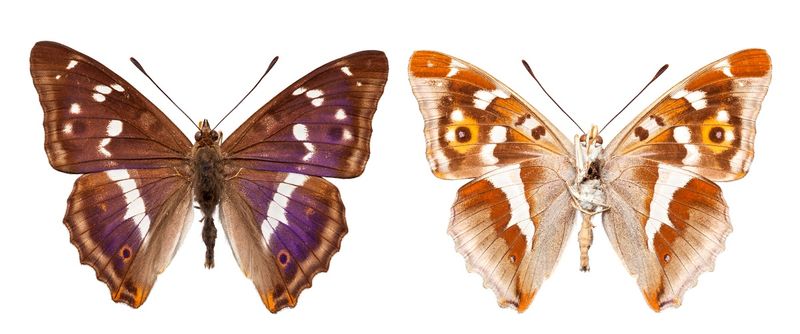
Butterflies and moths, though often confused, exhibit enchanting similarities across continents. In North America, vibrant butterflies flutter through meadows, captivating with their colorful patterns. In Australia, moths of similar hues and sizes dance in moonlit forests. Despite living oceans apart, these winged wonders share analogous features, a testament to convergent evolution.
Both insects serve vital ecological roles as pollinators, fostering biodiversity. Their striking resemblance, despite distant habitats, sparks curiosity among entomologists. The visual allure of their wings is not just for aesthetics; it’s a survival tactic to ward off predators.
Did you know? Many cultures associate butterflies with transformation and hope, while moths symbolize mystery and the night.
Lemurs and Tarsiers

Lemurs and tarsiers, with their captivatingly large eyes, thrive in Madagascar and Southeast Asia, respectively. These nocturnal primates, though separated by vast oceanic stretches, exhibit remarkable resemblances.
Lemurs’ sociable nature in Madagascar’s lush forests contrasts with the elusive tarsiers found in dense Asian jungles. Their shared adaptations highlight nature’s ability to solve similar challenges independently. The oversized eyes enhance night vision, an evolutionary answer to their nocturnal lifestyles.
Fun Fact: Lemurs are known for their playful behavior and group dynamics, while tarsiers impress with their ability to rotate their heads almost 180 degrees, much like an owl, enhancing their mysterious aura.

